How to combat counterfeiting with new print technologies

What are printing companies doing to help brands protect their products? One unique solution comes from Swiss specialists IQDEMY.
As many brands and businesses will tell you, counterfeiting is so much more than simply producing fake money, as criminals seek to make a tidy profit by conning unsuspecting people out of their own, real cash.
A large number of these activities involve print in some way or another, whether it is printing fake money or producing counterfeit credit and debit cards. But fear not; much as it has done for hundreds of years, print also has a major role to play helping combat counterfeiting.
New, print-focused techniques to tackle counterfeiting activities are coming into play all the time. One of the latest to hit the market is Quantum Dot printing technology from IQDEMY, which uses the technique as part of its security solutions.
Quantum Dots technology – what exactly is it?
Founded in 1998, IQDEMY Group includes the firms IQDEMY for customised and industrial printing equipment manufacture, DPS-Innovations for control electronics and modules production, and IQDEMY Chemical – a laboratory for inks, primers, and specific formulations development including the idea of Quantum Dot printing technology.
Such is the flexibility of this method that it can be used to help tackle counterfeit activities across a range of markets and industries such as in consumer goods, brand protection, pharmacology, medicine electronics, defence industries, etc.
Both quantum dots' lifetime and luminescence parameters are higher than luminophores and their particle size allows use in digital printing
But what exactly is Quantum Dot printing technology? Yulia Trubitsyna, Special Projects Manager at IQDEMY, told us more about this exciting method.
To put it simply, Quantum Dots are nano-size particles of conductors or semi-conductors, with diameters from 2 to 10nm. Made up of either a single or multiple elements, each can have a multi-layered structure where the core is made of one mixture and the outer shell out of another. Quantum Dots vary in colour – over 30 options in total – and range in size to allow for more colour combinations.
“Quantum dots are smaller than traditional luminophores; both their lifetime and luminescence parameters are higher than that of luminophores and their particle size allows for use in digital printing,” Yulia said.
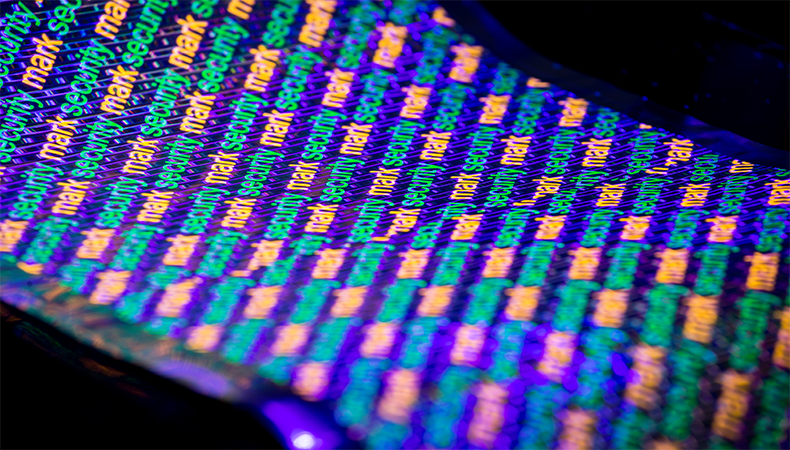
QD security inks can be used to help increase security of printed documents such as certificates, licences and bills
Why should we consider this sort of technology?
This all sounds very impressive – if not a little complicated – but what good will it do us and why do we need it in the first place? Many security print companies already have their own tried and tested techniques for protecting products, so what does Quantum Dot technology offer that others do not?
That's why just going digital without any ground-breaking technology is not worth the deal. Here comes IQDEMY technology of printing with Quantum Dots
Many companies opt to use digital print for security measures, but Yulia flags up an issue in doing so: “Traditionally, organisations related to security printing, including governmental bodies, use offset, intaglio and screen printing technology, and going digital for them is time- and cost-consuming.
“The smaller the company is, the easier it is for it to switch to digital. However, from another point of view, digital printing is a world-leader for counterfeiting techniques, with more than half of counterfeited money being printed on digital equipment.
“That's why just going digital without any ground-breaking technology is not worth the deal. Here comes our technology of printing with Quantum Dots.”
Where and how can Quantum Dots security inks be put to use?
Quantum Dots can help save on time and costs when it comes to security printing, but what key benefits does this offer over other kit?
In addition to the colour benefits already outlined, Yulia says that it can be incorporated into many existing secure documents without having to use any other processes. This includes incorporating Quantum Dots security inks into the sewing or stitching threads in passports, printing into holograms – which are commonplace on banking cards – and security-printed documents.
There’s also the option to use inks with Quantum Dots for coding applications, with one example being that IQDEMY replaced the traditional magnetic strip on the back of a payment card with a quantum dot-printed strip, quick response (QR) type code. This was precision-printed using five different QD security inks over a background colour, which, according to IQDEMY, allows for the encoding of some 2,500 symbols.
In relation to this, IQDEMY can use QD security inks to print encoded QR codes. Here, the code is printed with several types of ink, which vary in wavelengths (colour), brightness and intensity. This type of QR code isn’t readable under usual UV light, only under a special scanner adjusted to specific wavelengths.
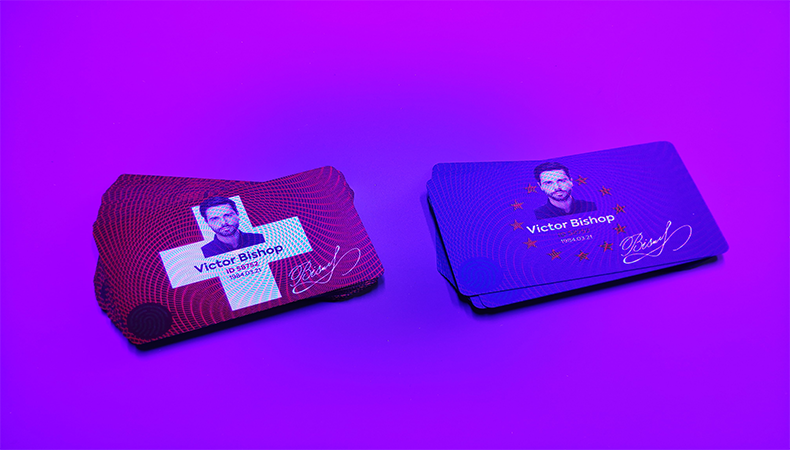 Quantum Dot technology can be integrated into specific security markings such as holograms, QR codes, security threads and so on
Quantum Dot technology can be integrated into specific security markings such as holograms, QR codes, security threads and so on
Yulia says that there is also the option to use Quantum Dot technology in applications with tactile relief effects and also incorporate it into polymers film materials, both of which can be used in certain secure documents like ID cards. In addition, up-converting – or anti-Stokes (converting infrared to visible light) – Quantum Dot inks have been developed to absorb infrared radiation and emit in the visible spectrum.
How is this possible?
While the term ‘quantum’ may suggest that this sort of technology is complicated and as such not a long-term or widespread solution to counterfeiting problems in print, it appears that this is not the case.
Yulia says that those with responsibility for checking products, such as passport control officers or bank staff running checks on credit cards, would only require a simple UV flashlight for initial detection of Quantum Dots.
Alternatively, they can use a fine-tuned UV scanner, which is preselected to be sensitive to a particular wavelength or narrow range of wavelengths, depending on what they are scanning.
In terms of whether a product passes these checks is also easily measurable, in that it is a simple yes or no answer. If the product has the correct Quantum Dot 'code”: wavelength, full width at half maximum (emission intensity) and brightness – the parameters known only for the producer of the original product, it is genuine; if it does not pass, then it may be a counterfeit.
Yulia says there is also the option to produce more complex custom-made instruments to detect certain parameters of Quantum Dot inks and other forms of marking. For example, some barcodes and QR codes have particular light emission spectrums and would require such a device.
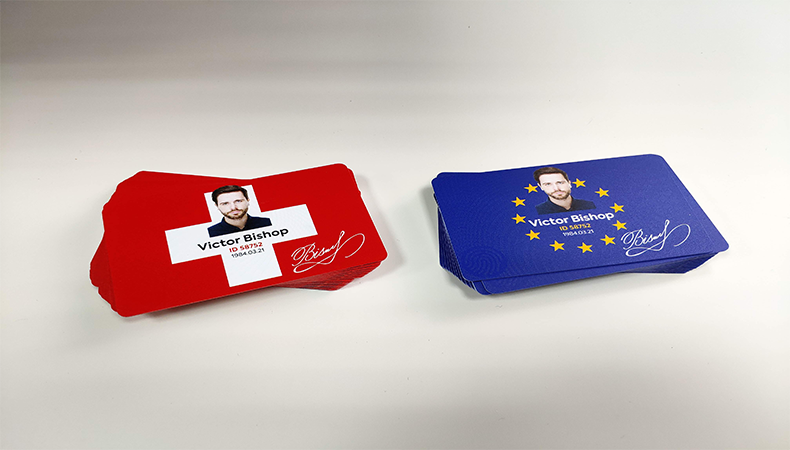 IQDEMY QD security inks can be printed in more than 30 different colours – what matters is emission wavelength, not colour itself
IQDEMY QD security inks can be printed in more than 30 different colours – what matters is emission wavelength, not colour itself
Where do we go from here?
Quantum Dot technology certainly looks like it has all of the key attributes to offer a solution to security printing demands across a range of industries. What stands out most is the flexibility of this technique compared to some of the existing methods and technologies already available on the market.
Quantum Dots can be changed and manipulated for use in various security verification tools. From bank card strips and holograms, to QR codes and hidden patterns, Quantum Dots offer a new level of flexibility to help brands and organisations combat counterfeiting.
To find out more about Quantum Dots technology and its applications, visit www.iqdemy.ch or please, contact Yulia Trubitsyna – y.trubitsyna@iqdemy.ch
- Most Quantum Dots are nanosize particles of conductors or semi-conductors, with diameters from 2-10 nm.
- Quantum Inks can be printed in over 30 different colours.
- Quantum Dots allow encoding of QR codes using different wavelengths, brightness and colour intensity.
Become a FESPA member to continue reading
To read more and access exclusive content on the Club FESPA portal, please contact your Local Association. If you are not a current member, please enquire here. If there is no FESPA Association in your country, you can join FESPA Direct. Once you become a FESPA member, you can gain access to the Club FESPA Portal.
Topics
Recent news
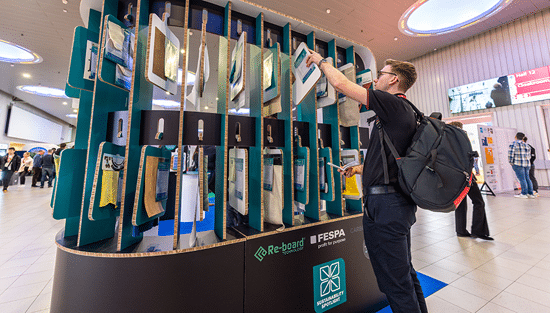
New sustainable materials at Sustainability Spotlight
Sustainability Spotlight returned by popular demand to FESPA Global Print Expo last month in an exhibit curated by The Good Factory.
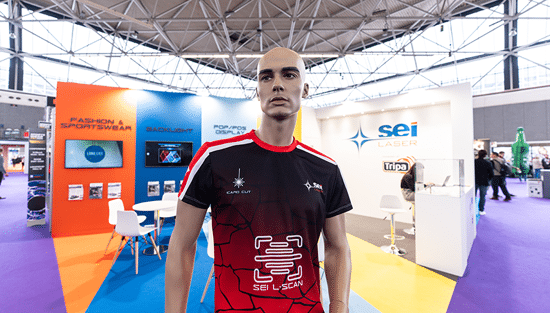
Sportswear Pro: building ‘Brand Me’
After the success of the inaugural Sportswear Pro last month, we spoke with panellist and personalisation expert James Lawrence-Jones about the most exciting revelations at the event.

